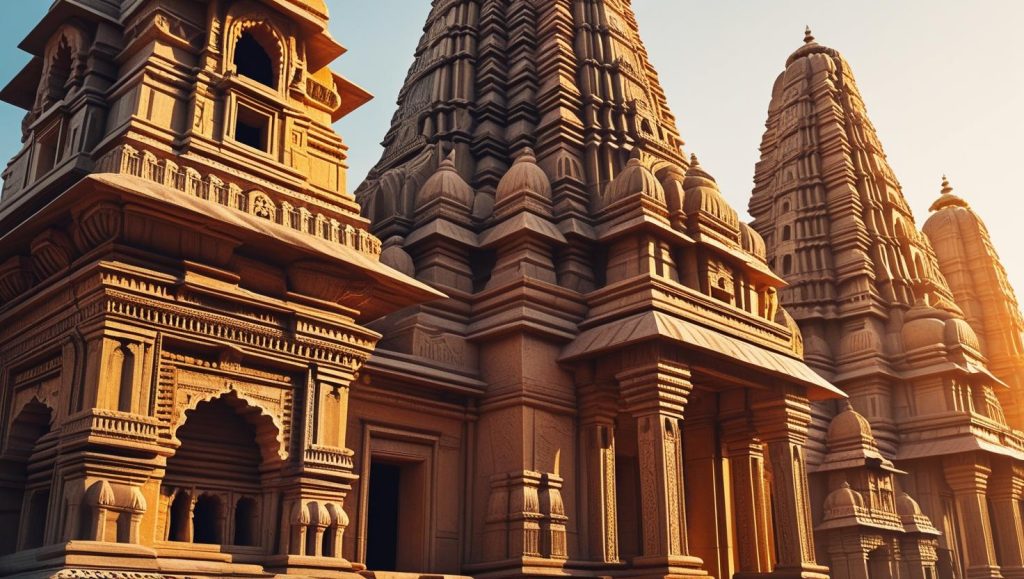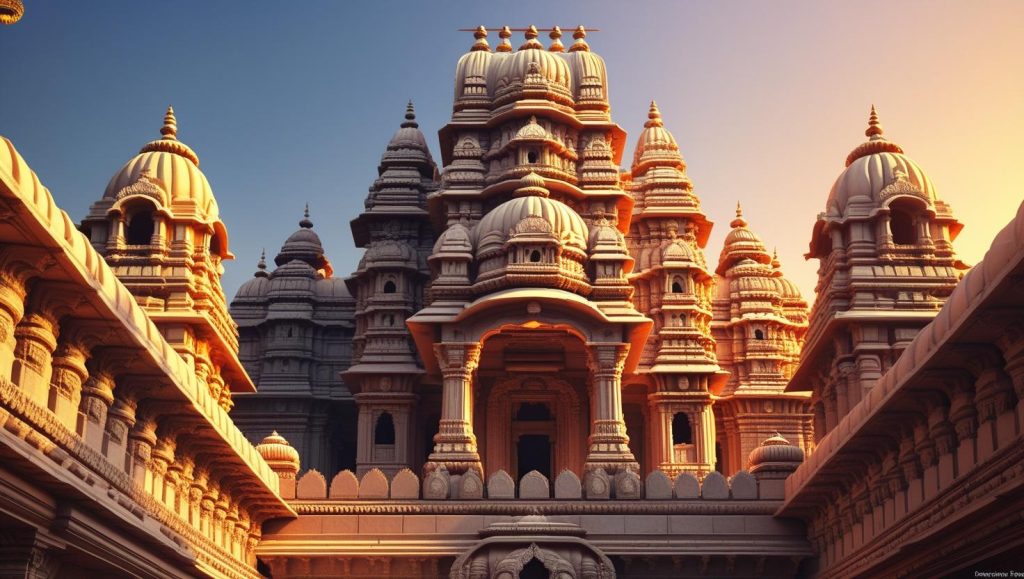Introduction
The Rishabhdev Temple, also known as Kesariyaji Temple, is not only a sacred pilgrimage site but also a masterpiece of architecture. Dedicated to Tirthankar Rishabhdev (Adinath Bhagwan), this temple in Rajasthan is admired for its intricate carvings, majestic pillars, and spiritual aura. Every stone tells a story, and every corner reflects the devotion of generations of artisans and devotees.

A Blend of Artistic Traditions
The temple’s design is a harmonious blend of Jain and Mewar architectural styles. This unique fusion can be seen in the elaborate carvings, domed ceilings, and decorative arches. It reflects the cultural exchange and artistic collaboration of the region over centuries.
The Majestic Entrance
The temple’s grand entrance, adorned with finely carved toranas (arches), welcomes devotees into a world of serenity. These gateways are decorated with floral patterns, mythological motifs, and Jain symbols such as the dharmachakra and lotus.
Intricately Carved Pillars
Inside the temple, the hall is supported by beautifully sculpted marble and sandstone pillars. Each pillar is unique, featuring carvings of deities, celestial beings, and sacred symbols. The craftsmanship is so detailed that even the smallest patterns are perfectly executed.

The Sanctum and Idol
At the heart of the temple lies the sanctum (garbhagriha), which houses the striking black stone idol of Rishabhdev in a meditative posture. Adorned with silver ornaments and fresh flowers, the idol radiates peace and divinity. The sanctum is dimly lit to create a serene atmosphere for meditation and prayer.
Ceiling Art and Symbolism
The ceilings are decorated with geometric patterns, floral designs, and Jain mythological scenes. These intricate artworks are not just ornamental — they represent the cosmic order and the path to liberation as taught in Jain philosophy.
Courtyards and Surrounding Shrines
The temple complex features open courtyards where devotees gather during festivals. Around the main temple, there are smaller shrines dedicated to other Jain deities, each showcasing distinct architectural details and carvings.
Sustainability in Design
The Rishabhdev Temple’s architecture is also a lesson in sustainability. The use of locally sourced stone, natural ventilation, and strategic lighting demonstrates the wisdom of ancient builders who respected both artistry and environmental harmony.
Conclusion
The Rishabhdev Temple is more than a place of worship — it is a living monument to devotion, art, and history. Every visit is a chance to witness the perfect blend of spirituality and craftsmanship. Standing in its halls, surrounded by centuries-old carvings, one can truly feel the timeless connection between faith and architecture.


